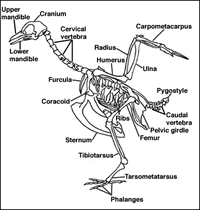When you write, are you consciously aware of structuring your screenplay, or it is something that is more instinctive?
— Brian
Galway, Ireland
When I was first starting out, I was paranoid about structure — but that’s because I didn’t know what it really was.
I had of course read Syd Field’s book, and I worried that if I wasn’t hitting my act breaks at exactly the right page number, I was a dismal failure. Then at USC I was introduced to a “clothesline” template, which was baffling. People smarter than me would talk about eight sequences, or eleven sequences, and I would nod as if I understood.
And now I do: It’s all bunk.
 At the risk of introducing another screenwriting metaphor, I’ll say that structure is like your skeleton. It’s the framework on which you hang the meat of your story. If someone’s bones are in the wrong place, odds are he’ll have a hard time moving, and it won’t be comfortable. It’s the same with a screenplay. If the pieces aren’t put together right, the story won’t work as well as it could.
At the risk of introducing another screenwriting metaphor, I’ll say that structure is like your skeleton. It’s the framework on which you hang the meat of your story. If someone’s bones are in the wrong place, odds are he’ll have a hard time moving, and it won’t be comfortable. It’s the same with a screenplay. If the pieces aren’t put together right, the story won’t work as well as it could.
But here’s the thing: not every skeleton is the same.
Think about it in real-world terms.
 Human skeletons are pretty consistent, but you also have gazelles and giraffes, cockroaches and hummingbirds, each with a different structure, but all equally valid designs. The standard dogma about screenplay structure focuses on hitting certain moments at certain page numbers. But in my experience, these measurements hold true for Chinatown and nothing I’ve actually written.
Human skeletons are pretty consistent, but you also have gazelles and giraffes, cockroaches and hummingbirds, each with a different structure, but all equally valid designs. The standard dogma about screenplay structure focuses on hitting certain moments at certain page numbers. But in my experience, these measurements hold true for Chinatown and nothing I’ve actually written.
My advice? Stop thinking about structure as something you impose upon your story. It’s an inherent part of it, like the setup to a joke. As you’re figuring out the story you want to tell, ask yourself a few questions:
- What’s the next thing this character would realistically do?
- What’s the most interesting thing this character could do?
- Where do I want the story to go next?
- Where do I want the story to end up eventually?
- Does this scene stand up on its own merit, or is it just setting stuff up for later?
- What are the later repercussions of this scene? How could I maximize them?
If you answer these questions at every turn, I guarantee you’ll have a terrifically structured screenplay. It might not hit predefined act breaks, but it will be consistently engaging, something that can’t be said for many “properly structured” scripts.